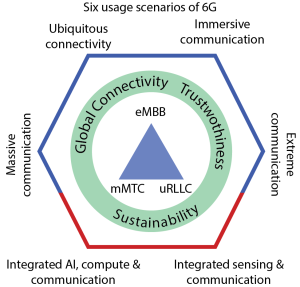Industry
Development of Global 6G standards in the ITU

Following the successful rollout of its 5G standards around the world, the International Telecommunications Union, ITU, the Global UN body for ICT standards, has now started preparing the global 6G standards under its framework agreement for International Mobile Telecommunications, 2030 (IMT-2030). India’s ITU forum, the ITU APT Foundation of India has been partnering with other 6G interest groups in India and elsewhere, including the 5GIF in India and World Wireless Research Forum globally to facilitate taking India’s unique connectivity requirements to the global fora.
In my earlier letter to Shri Ashwani Vaishnaw, Minister of Communications, I had pointed out that the 6G work is happening globally and the opportunities this technology will tap into. We had also requested the DoT to create a group to harmonize 6G technology development. Countries like the USA, Korea, China, and Japan have been pushing their vision for 6G through their respective industry forums. Based on inputs received by the ITU for development of 6G framework, IMT-2030 will, in addition to the extremely high-speed data, low latency and massive connection density, bring immersive communication services using new wearable glasses and gadgets, interactions with digital twins at faraway places, internet of senses, and extensive use of Artificial Intelligence.
IAFI has been contributing to the 6G development and standardization work happening at the ITU for the 6G standards. During the preparatory process in India for the ITU global meeting on 6G standardization, we submitted a proposal to the national preparatory group of the Indian administration which later became a part of the Indian national contribution to ITU Working Party WP5D (Document 5D/1614), the expert group within ITU dealing with standardization of IMT technologies.

In this contribution, India proposed a new usage scenario for 6G for providing ubiquitous connectivity to connect the unconnected, rural and remote areas as a new requirement for the proposed 6F framework, in this contribution to the ITU. One of the main pillars of this contribution was how 6G could be the next big step in connecting the unconnected and providing ubiquitous connectivity, as a follow up of the LMLC concept that India proposed to the world and got included in the 5G global standards.
IAFI input to the ITU focused on six usage scenarios which were pictorially presented below.
IAFI has recommended that the 6G system should target the offering of a peak data rate that would be at least 50 times that of 5G. This will be necessary to offer extended reality (XR) services. And to offer massive connectivity applications that are reliable, the technology needs to be designed to perform at least 10 times better than 5G. To offer such services, the technology will operate on a good quality spectrum. We are proposing technical studies to be undertaken at the different scientific forums to evaluate the coexistence behavior with other services including satellite and maritime applications. India needs to identify at least 1 GHz of new spectrum per operator in the 7-15 GHz for that to happen, in addition to the contiguous spectrum spanning several GHz in the sub-THz range (92-300 GHz). Such harmonized spectrum identification in a timely manner is crucial for the Indian industry to develop 6G technology not only for India’s billions but also for the world.















You must be logged in to post a comment Login